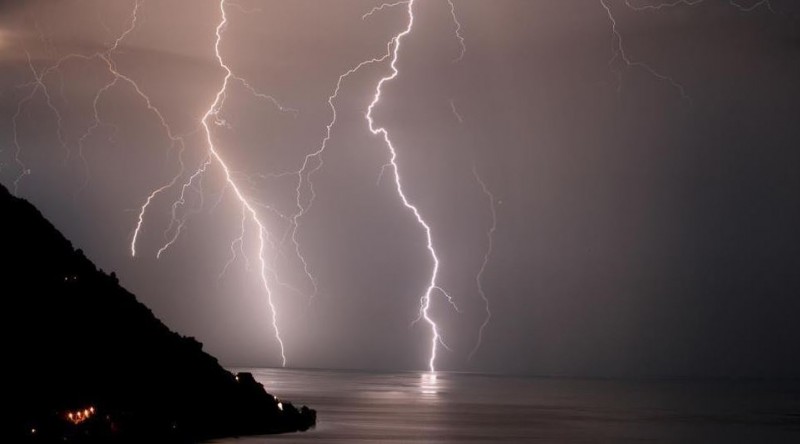
Introduction
Lightning is a fascinating and powerful force of nature that has captivated humans for centuries. It is commonly believed that lightning never strikes the same place twice, but this is far from the truth. In fact, lightning can and does strike the same place more than once, and it's not as rare as one might think. In this article, we will delve into the science behind lightning strikes, the factors that influence them, safety measures to follow, and debunk the myth surrounding multiple strikes. Let's explore the electrifying world of lightning!
Understanding Lightning Strikes
To comprehend why lightning can strike the same place twice, it's essential to understand how lightning forms. Lightning occurs when there is an electrical discharge between the ground and the atmosphere, typically during a thunderstorm. It is caused by the separation of positive and negative charges within a cloud and between the cloud and the ground. When the electric potential difference becomes too great, a powerful discharge of electricity in the form of lightning is unleashed.
Factors Influencing Lightning Strikes
Several factors influence where lightning strikes occur. The most significant factor is the presence of tall objects or structures, such as trees, buildings, or mountains, that act as lightning attractors. Additionally, geographical features, such as bodies of water or open fields, can increase the likelihood of lightning strikes. Weather patterns, including the prevalence of thunderstorms and the movement of air masses, also play a role in determining where lightning will strike.
Lightning Safety Measures
Given the unpredictable nature of lightning, it's crucial to take precautions to ensure personal safety during thunderstorms. Here are some essential lightning safety measures:
Seek shelter indoors or in a sturdy, fully enclosed vehicle during a thunderstorm.
Avoid open areas, tall objects, and bodies of water.
If caught outside with no shelter available, crouch down in a low-lying area and minimize contact with the ground.
Stay away from metal objects, electrical appliances, and plumbing fixtures during a thunderstorm.
Wait at least 30 minutes after the last observed lightning or thunder before resuming outdoor activities.
Lightning Rods: How They Work
Lightning rods are devices designed to protect structures from the devastating effects of lightning strikes. They work on the principle of providing a preferred path for lightning to follow, redirecting its energy harmlessly into the ground. A typical lightning rod consists of a tall metal rod installed at the highest point of a structure, connected to a network of conductors and grounding electrodes. When lightning strikes, the rod intercepts the electrical discharge and channels it safely into the ground, minimizing the risk of damage or injury.
Myth Busting: Lightning and Tall Structures
Contrary to popular belief, tall structures such as skyscrapers or towers do not attract lightning but are rather better conductors of electricity. Lightning typically strikes the highest point in its proximity, regardless of whether it has been struck before. Therefore, tall structures are more prone to being struck due to their elevation, not because they have been previously hit. Each lightning strike is a separate and unique event.
Lightning Strikes and Natural Phenomena
Lightning is not limited to striking the ground or tall structures alone. It can also occur within clouds, known as intra-cloud lightning, or between different cloud systems. Additionally, rare phenomena such as upward lightning, where lightning discharges from tall objects to the clouds above, have been observed. These occurrences highlight the complex and awe-inspiring nature of lightning and its ability to manifest in various ways.
Lightning Strikes in Pop Culture
The concept of lightning strikes has made its way into popular culture, often symbolizing powerful and transformative events. From literary works to movies and music, lightning strikes are depicted as dramatic moments of change or inspiration. They serve as metaphors for sudden revelations, electrifying passions, or the unleashing of immense power. These cultural references further demonstrate the enduring fascination and impact of lightning on human imagination.
Conclusion
In conclusion, the notion that lightning never strikes the same place twice is a myth. Lightning can indeed strike the same location multiple times, and it's not uncommon. Understanding the science behind lightning strikes, the factors that influence them, and taking appropriate safety measures are essential in staying protected during thunderstorms. By debunking misconceptions and appreciating the true nature of lightning, we can gain a deeper understanding of this awe-inspiring natural phenomenon.
Landmark Move: U.S. Senate Committee Backs India, Recognizes Arunachal Pradesh as Integral Part!
India's Next Moon Mission, Chandrayaan-3, Setting for Launch
Delhi HC Dismisses Plea to Postpone UPSC Mains Exam Amidst Pandemic